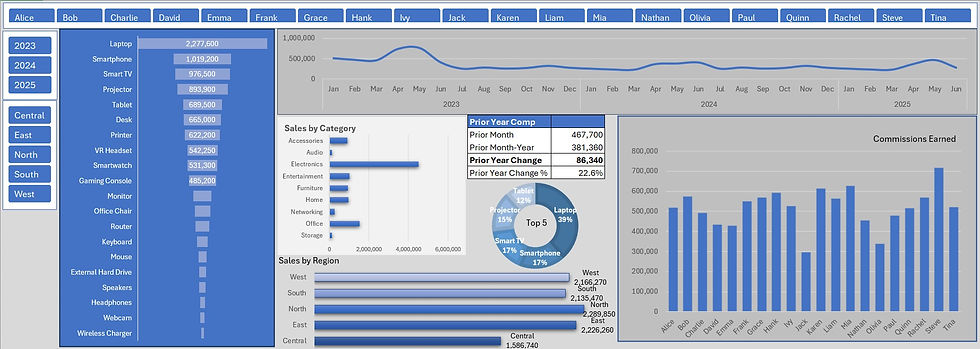Key Performance Indicators
- Michael Davenport
- Sep 5
- 3 min read
If you’re looking for your data, whether it's a data warehouse, lake, ocean, maybe your new and it’s just a puddle, to give you direction, Key Performance Indicators (KPIs) are your compass. They don’t just measure - they also guide. Whether you're slinging coffee, bookkeeping, or building a dashboard empire (think Data is King here), KPIs help you cut through the noise and focus on what truly moves the needle. As you know, when a small business moves the needle, it can have big impacts.
KPIs are strategic signals - quantifiable questions that align with your goals and reveal where you are on the map and whether you are headed in the right direction. There are some standard KPIs – Sales Margin, Utilization Rate, Client Acquisitions, and Profit Margin but we can create custom KPIs that are unique to your business. Your small business may fill a niche that an out of the box product won’t identify. My focus is to provide custom, small business analytics and together we’ll create KPIs that are right for you. Together, we’ll figure out where you are on the map (current data), where you want to be (goals), measure the direction with KPIs and develop the tools needed to change direction.
But not everything that can be measured should be. The magic lies in choosing the right KPIs.
Tie to Strategy/Strategic Plan
Every KPI should answer: “Does this help me achieve my goals?”
Maybe your goal is to improve customer retention. To know if you are improving you must know where you are. Then, know what buttons to push to change direction, loyalty program, create emotional connections, or custom service. As you roll out these options, we now measure the changes. Going towards the goal, is this cost effective, and what kind of momentum are we building?
2. Maintain a streamlined approach by selecting 3–7 KPIs for each objective. Exceeding this range may dilute focus and lead to analysis paralysis. The goal is to facilitate efficient decision-making rather than add complexity. Prioritize key metrics, address, and then proceed to down the list.
Blend Leading and Lagging Indicators
Leading: Predict future performance (e.g., site traffic, demo requests)
Lagging: Confirm past results (e.g., revenue, churn, or conversion rate)
Make It Actionable
A good KPI doesn’t just inform - it provokes action. If your inventory turnover drops, you should know what knob to twist. For it to be a good KPI, we need to figure out how to move it, otherwise it’s just a number.
Category | KPI Example | Why It Matters |
Sales | Conversion Rate | Reveals funnel efficiency |
Inventory | Stockout Rate | Flags supply chain gaps |
Shipping | On-Time Delivery % | Measure of reliability |
Content/Blogging | Bounce Rate, Avg. Time on Page | Gauges engagement |
Branding | Net Promoter Score (NPS) | Captures customer sentiment |
KPI Pitfalls to Avoid
Tracking everything: Not every metric is a KPI. Be ruthless. Make goals, prioritize, improve, and move on.
Ignoring context: A 5% drop in traffic might mean nothing if conversions are up. In the short term. However, if conversions don’t happen, let’s figure out why.
Not revisiting KPIs: Your goals evolve – your KPIs should too. Like a vision board, or bucket list. We can do this together.
Look, good KPIs aren’t just numbers - they’re narratives, they point in a direction. They tell the story of your business, your brand, your momentum. When chosen wisely and tracked consistently, they become your most powerful decision-making tool. They can help you spot changes in market conditions, customer trends, or hot items.
So, whether you're selling houses, prepping meals, or scaling a startup, make sure your KPIs are working and evolving as hard as you are.


Comments